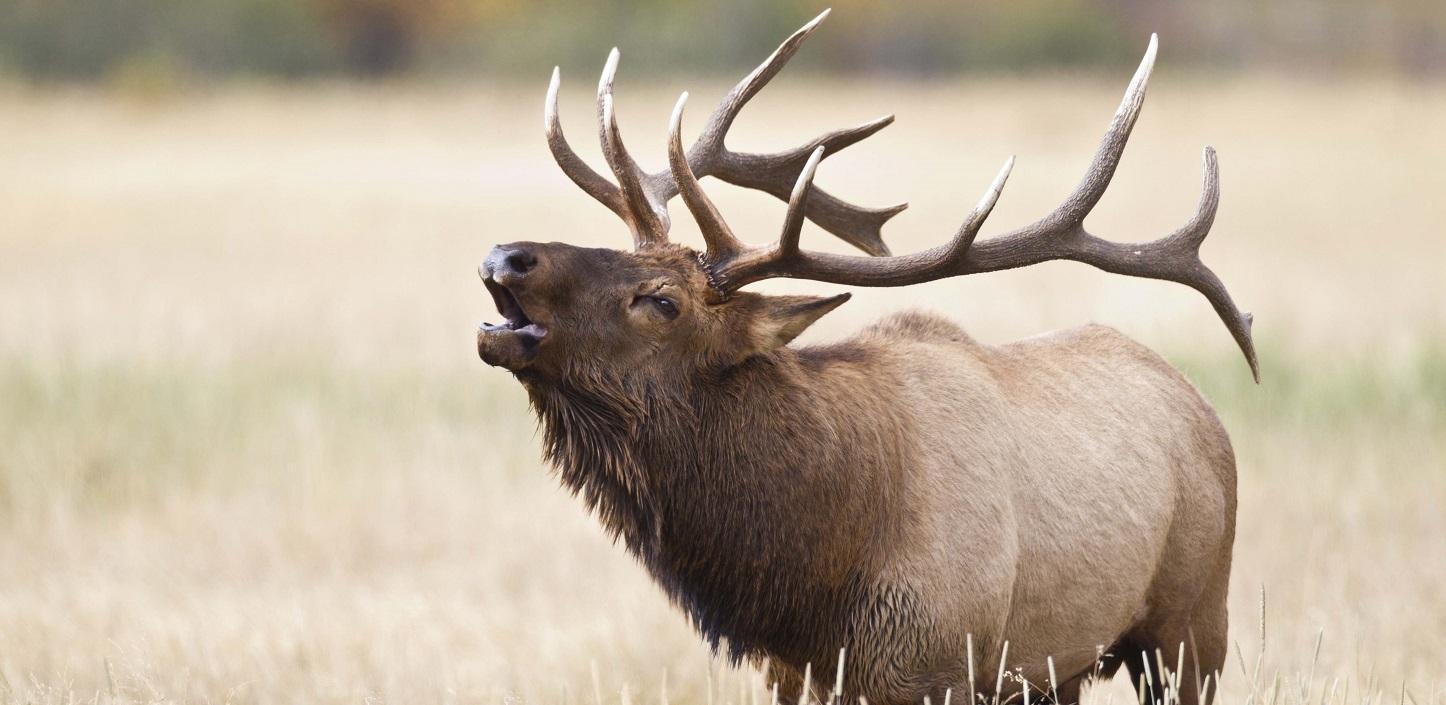
NFWF Announces Nearly $4 Million in Grants via the Western Big Game Seasonal Habitat and Migration Corridors Fund
Eleven organizations will work to protect migration corridors and improve habitat for pronghorn, mule deer, and elk across the Rocky Mountain Rangelands
WASHINGTON, D.C. (May 9, 2023) – The National Fish and Wildlife Foundation (NFWF) today announced nearly $4 million for 13 grants to secure key migration paths and restore rangeland habitats in Arizona, California, Colorado, Idaho, Montana, New Mexico, Oregon, Utah, and Wyoming. The grants will leverage $9.2 million in matching contributions for a total conservation impact of $13.2 million.
The grants were awarded through the Western Big Game Seasonal Habitat and Migration Corridors Fund, a partnership between NFWF, the Bureau of Land Management, the U.S. Fish and Wildlife Service, the U.S. Forest Service, USDA’s Natural Resources Conservation Service and ConocoPhillips, with additional funding this year from the Bezos Earth Fund.
Since 2019, there have been five rounds of grants awarded under this program which have cumulatively awarded $15.6 million across 66 projects, leveraging $72.3 million in matching contributions to generate a total conservation impact of nearly $88 million. Together, these projects will:
- Protect 175,000 acres of private land from fragmentation through conservation easements
- Restore 129,000 acres of public, private and tribal land through efforts like invasive weed and conifer removal treatments
- Improve management on 902,000 acres of public, private and tribal land through efforts like grazing and wildlife management plans
- Remove or improve 886 miles of fencing to be more wildlife friendly, reducing direct mortality and increasing landscape connectivity
- Restore hydrology on 41,500 acres of public mesic habitat
“The conservation projects funded this year by the Western Big Game Seasonal Habitat and Migration Corridors Fund will make great strides towards protecting species including pronghorn, mule deer and elk during their annual migrations and enhancing the rangeland habitats they need to survive and thrive,” said Jeff Trandahl, executive director and CEO of NFWF.
The Western Big Game Seasonal Habitat and Migration Corridors Fund aims to conserve critical winter range and migration corridors to maintain healthy populations of pronghorn, elk and mule deer, and the phenomenon of big game migration.
The western United States is home to some of the largest herds of wild native ungulates in North America. However, the seasonal migrations many of these populations rely on in response to weather conditions and resource availability face significant threats. Habitat fragmentation often limits the availability of high-quality forage and cover, and poor habitat condition limits the health and reproductive success of the herd. The projects supported by the 13 grants announced today will tackle these problems, among others, to restore and protect big game species and the rangeland habitats they need to survive and thrive.
“Wildlife corridor connectivity is central to the Biden-Harris administration’s all-of-government approach to addressing the impacts of the climate crisis and the impact of human activity on habitat,” said U.S. Deputy Secretary of the Interior Tommy Beaudreau. “Thanks to these types of holistic public-private partnerships, the Interior Department is making significant progress on migration corridor conservation.”
This slate of 13 projects is expected to:
- Remove or improve 230 miles of fencing to wildlife-friendly standards
- Improve management on 192,000 acres of rangelands
- Restore 105,000 acres of public, private and tribal lands
- Place conservation easements on 57,000 acres
The 2023 grant slate features a unique inter-state partnership between Utah and Arizona to address multiple threats that impact an important long distance mule deer migration. Every year the majority of the Paunsaugunt mule deer herd migrates from their summer range in the Paunsaugunt Plateau area of Utah south across U.S. Highway 89 to their winter ranges in the Buckskin Mountains in Arizona. To protect this herd, the Wildlands Network is mapping and removing derelict fencing which is detrimental to mule deer movements in Utah; the Utah Division of Wildlife Resources is installing fencing to guide mule deer to three wildlife crossings across US 89; and the Arizona Game and Fish Department is restoring critical winter range habitat by removing invasive woody vegetation at the end of the herd’s migration.
“The Arizona Game and Fish Department is committed to improving habitat for all wildlife. The infusion of these funds will directly contribute to the resiliency of mule deer on the Kaibab Plateau and the migratory winter home to Utah’s Paunsaugunt mule deer herd. Additionally, these funds will enhance connectivity for Arizona’s largest population of pronghorn antelope in central Arizona's Grand Canyon corridor. With all the multi-jurisdictional planning in place, the stage is set to improve winter habitat and connectivity over thousands of acres in central Arizona and the north Kaibab. The National Fish and Wildlife Foundation has been and continues to be essential to make projects like this possible.” Said Ty Gray, director, Arizona Game and Fish Department.
A complete list of the 2023 grants made through the Western Big Game Seasonal Habitat and Migration Corridors Fund is available here.
About the National Fish and Wildlife Foundation
Chartered by Congress in 1984, the National Fish and Wildlife Foundation (NFWF) protects and restores the nation’s fish, wildlife, plants and habitats. Working with federal, corporate, foundation and individual partners, NFWF has funded more than 6,000 organizations and generated a total conservation impact of $8.1 billion. Learn more at www.nfwf.org.
###
Contact:
Rob Blumenthal, 202-857-0166, rob.blumenthal@nfwf.org